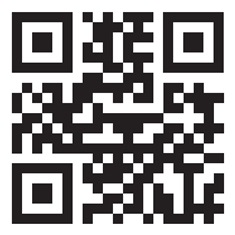
Making Living Wills More Clear with a QR Code Link to a Video Personal Statement
They go by many names, living wills, advance directives for healthcare, healthcare powers of attorney and healthcare proxies. I usually call them advance directives for healthcare (and will use that term in this article) because I think that covers all the issues they address.
There are more varieties of — and estate’s lawyers more frequently overhaul their forms of — advance directives for healthcare than perhaps any other kind of estate planning document. That is largely because society’s approach to end-of-life issues has broadened and changed dramatically in the past fifty years and it continues to change. As society’s approach changes, so does the law. For example some states have adopted physician assisted suicide and assisted suicide statutes. As the law evolves, these and related issues need to be addressed in advance directives for healthcare.
Generally an advance directive for healthcare covers at least the following three issues:
- A statement about what forms of medical, palliative and hospice treatment the person signing the advance directive for healthcare (the “declarant”) wants or does not want at the end of life.
- The appointment of a health care surrogate, health care proxy, health care representative or other health care decision-maker who will make end-of-life and other healthcare decisions when the declarant is unable to make and/or communicate them on his or her own.
- Directions concerning the declarant’s desires regarding organ donation.
I have written many advance directives for healthcare. My standard forms (which vary by state) are the product of working and re-working the form language numerous times and of course adapting it to the particular needs of each declarant whom I represent. I have often wondered what healthcare professionals think these document say when they read them for their patient.
An article in the February 16, 2017 issue of The Philadelphia Inquirer addresses this question. If two or more health care professionals read the same advance directive for healthcare, will they agree on what it says? A study recently published in the Journal of Public Safety suggests the answer to this question may be “no.” That means of course that we estates practitioners need to keep sharpening our pencils to make sure the documents we draft are clear enough so that every health care professional reading the advance directive will read it the same way — the way the declarant intends.  Interestingly, notwithstanding our ongoing efforts to draft with precision, the article suggests that a declarant’s verbal communications may reveal more about the declarant’s desires than the written document itself. Patients are encouraged to make available to their healthcare team a QR code that links to a short video of the declarant stating on video in his or her own words the substance of the advance directive. Apparently the non-verbal cues reveal as much or more than the words that we estates lawyers painstakingly piece together. Imagine that!
Interestingly, notwithstanding our ongoing efforts to draft with precision, the article suggests that a declarant’s verbal communications may reveal more about the declarant’s desires than the written document itself. Patients are encouraged to make available to their healthcare team a QR code that links to a short video of the declarant stating on video in his or her own words the substance of the advance directive. Apparently the non-verbal cues reveal as much or more than the words that we estates lawyers painstakingly piece together. Imagine that!
So the next time I draft an advance directive for healthcare, I am going to suggest that my client make a video that can be accessed by a QR Code by my client’s medical team when my client cannot communicate on his or her own.
